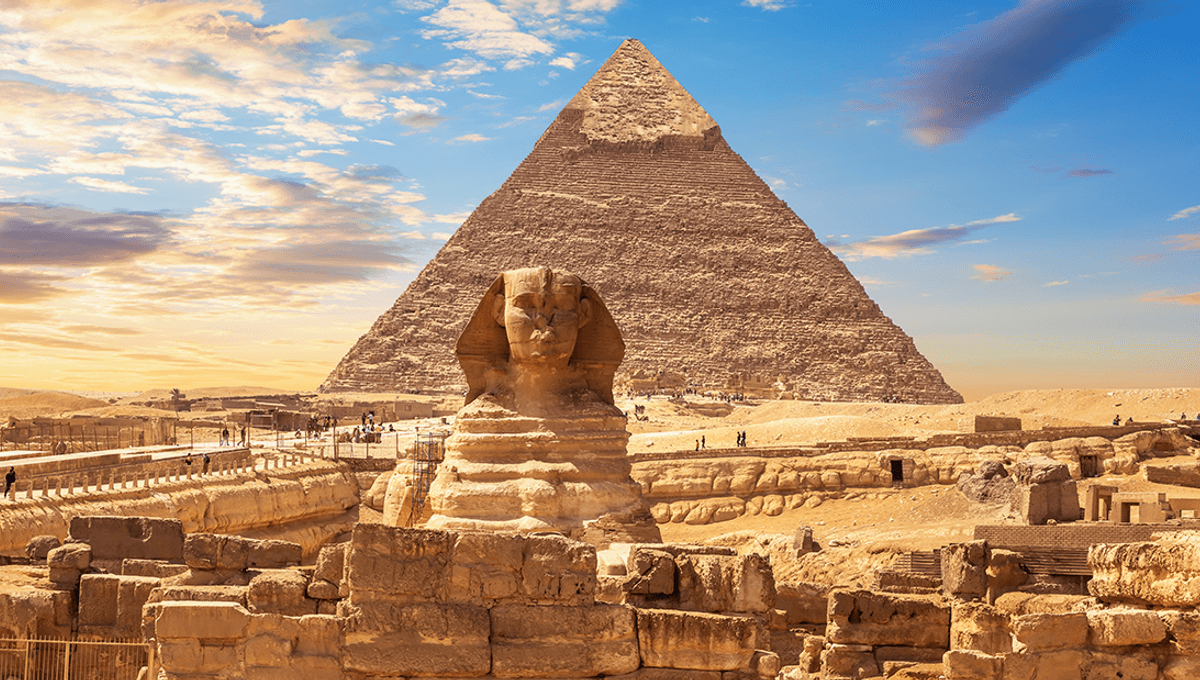
The pyramids in Egypt attract a lot of conspiracy theories. We sort of get it – they are ancient structures covered in hieroglyphics, containing the mummified bodies of pharaohs, as well as various long-lost chambers that are only just now being discovered thanks to new imaging techniques.
It is perhaps not surprising that there are conspiracy theories that the pyramids were built by aliens (they weren’t) or that they were somehow made to align with coordinates expressing the speed of light centuries before that coordinate system was invented (long story short, coincidences happen, of which this is).
One such conspiracy theory we hadn’t stumbled across before is currently circulating on X (Twitter); the idea that the pyramids show signs of erosion from a great flood, and that they were created as a time capsule to survive them.
“To all the science pretenders and PhDogmatists out there, you cannot dismiss this observation by induction, hearsay, or equivocation,” the poster continues. “Your standing hypothesis MUST definitively explain this feature – not simply accommodate it – or you are pushing pseudo science.”
Of course, this is not how science works. The burden of proof is on them to prove this hypothesis – and with extraordinary claims, you’d better be packing extraordinary evidence.
Archaeologists already have perfectly plausible explanations (based on evidence found by studying them, textual accounts, and so forth) for how the pyramids ended up looking the way they do, without invoking a great flood. The pyramids as we see them today are not how they appeared when they were built. The huge blocks you see at the pyramid were once concealed underneath “casing stones” made of limestone, giving a smooth, shiny appearance.
These were gradually taken away over the centuries and used for other building work, exposing the blocks underneath. Some are still there at the base of the pyramid, having been protected from being removed by the sand covering them, and the easier access to non-buried stones.
For fans of the outlier hypothesis (a great flood eroded the pyramids up to the top), the burden is on them to explain a lot of things. For a start, it would be helpful to explain why a great flood submerged the world, but we don’t see evidence of this event in the geological record.
The claim that the pyramids are far older also needs to be backed up with a lot more than an “I reckon”. The pyramids have been dated through several methods. First, the pyramids were dated through years of painstaking archaeological work.
“Primarily we date the pyramids by their position in the development of Egyptian architecture and material culture over the broad sweep of 3,000 years. So we’re not dealing with any one foothold of factual knowledge at Giza itself. We’re dealing with basically the entirety of Egyptology and Egyptian archaeology,” Mark Lehner, Archaeologist, Oriental Institute of the University of Chicago, and Harvard Semitic Museum explained to PBS.
“The pottery, for example. All the pottery you find at Giza looks like the pottery of the time of Khufu, Khafre, and Menkaure, the kings who built these pyramids in what we call the Fourth Dynasty, the Old Kingdom. We study the pottery and how it changes over the broad sweep, some 3,000 years. There are people who are experts in all these different periods of pottery or Egyptian ceramics.”
Then, when radiocarbon dating was developed, these ages were confirmed to be accurate by analyzing various materials found at the pyramids.
“For example, we used seeds and plant material from Tutankhamun’s tomb, which is very precisely dated,” Thomas Higham of the School of Archaeology at the University of Oxford told the BBC. “We also used seeds from a room underneath the Saqqara step pyramid dated to a specific year of the reign of King Djoser.”
For those disappointed that the pyramids are overwhelmingly likely not to be an ancient time capsule from ten thousand years ago, take solace in the fact that the Great Sphinx may have actually begun forming thousands of years ago (and not through human involvement). In 2023, a team looked at how features known as “yardangs” can be formed through wind erosion (no, not all erosion comes from flooding), taking on the rough shape and proportion to that seen in the Sphinx, much later carved into its current form.
“These results show what ancient peoples may have encountered in the deserts of Egypt,” the authors concluded, “and why they envisioned a fantastic creature.”
Source Link: People Appear To (Incorrectly) Believe The Pyramids Were Eroded By A Great Flood